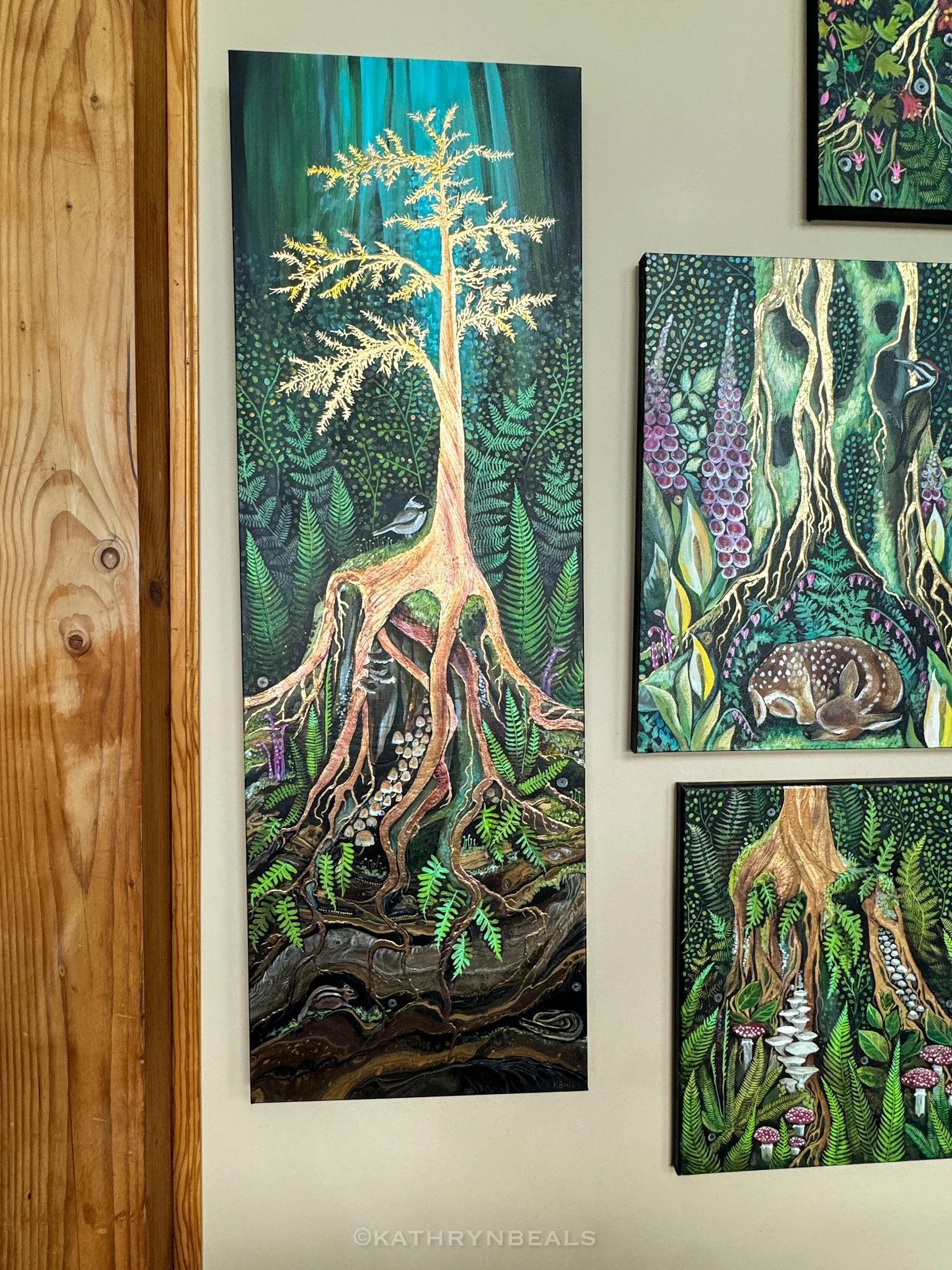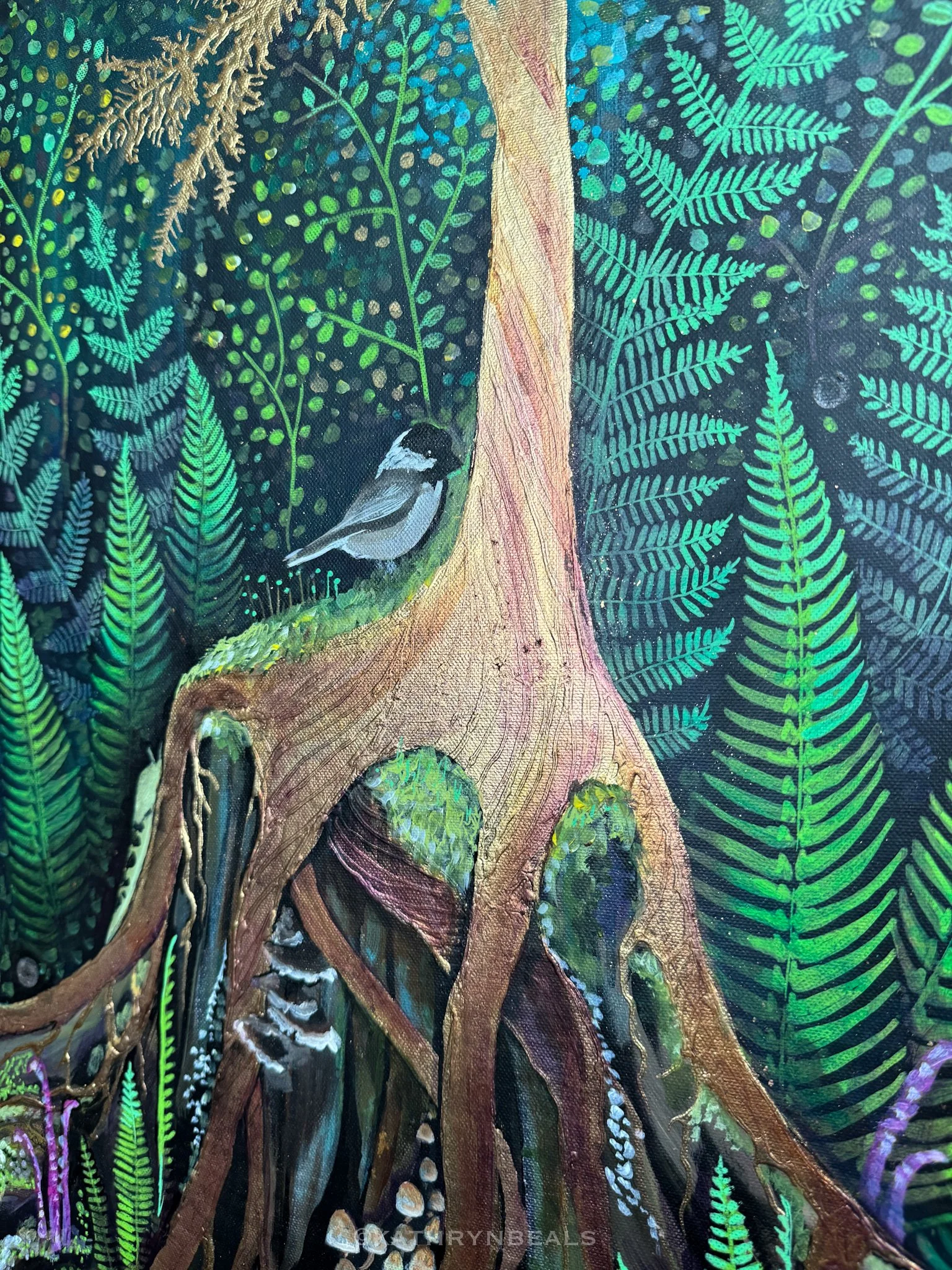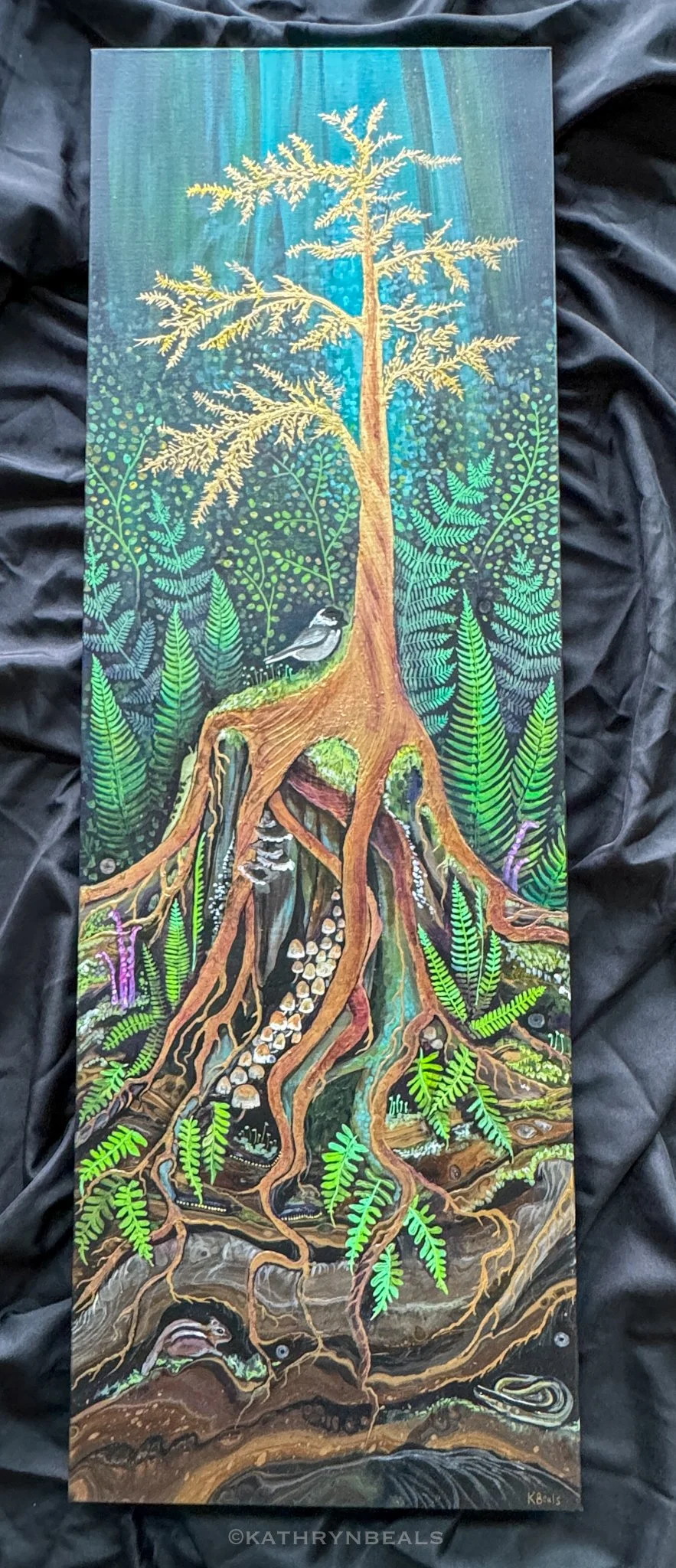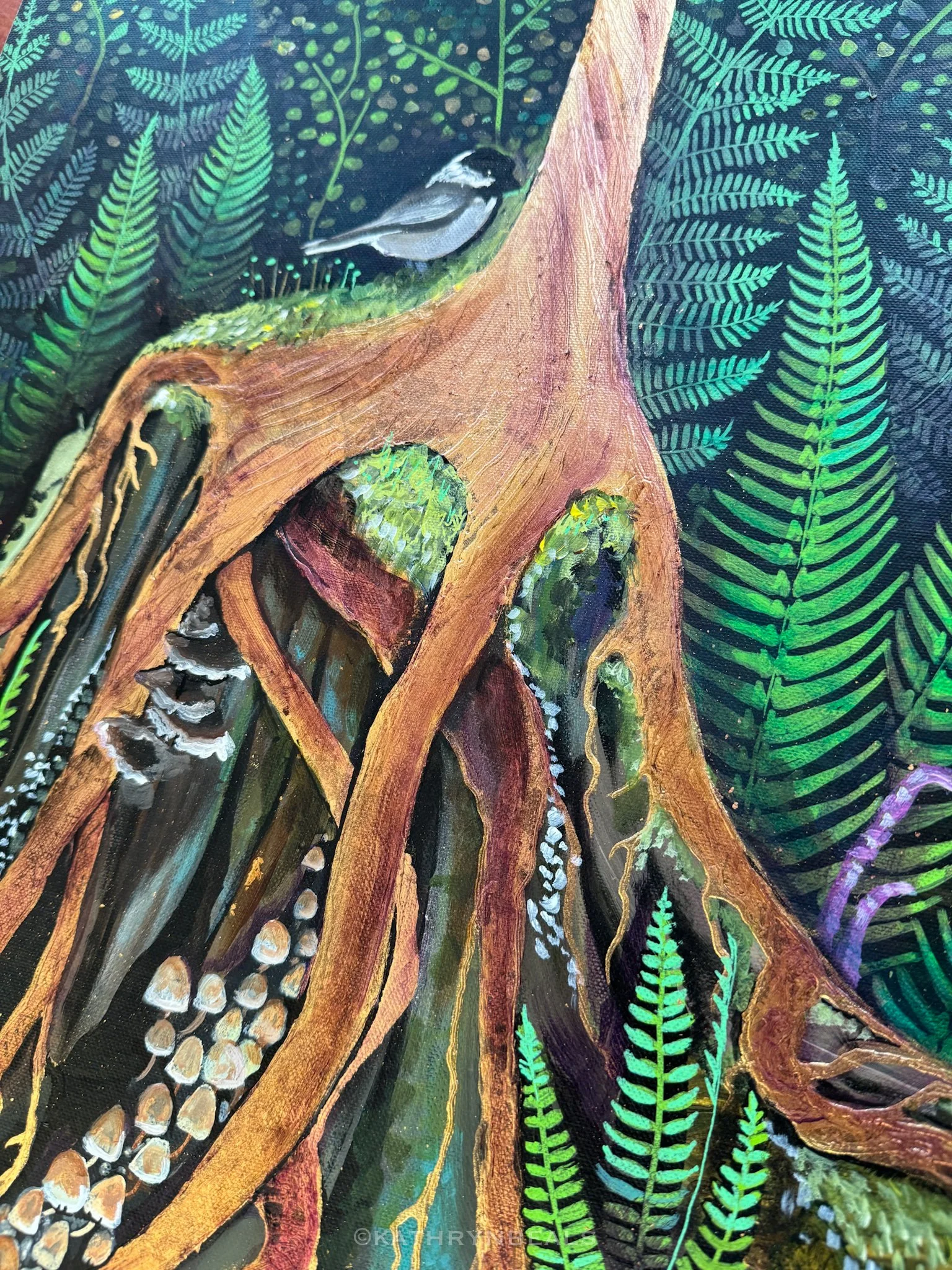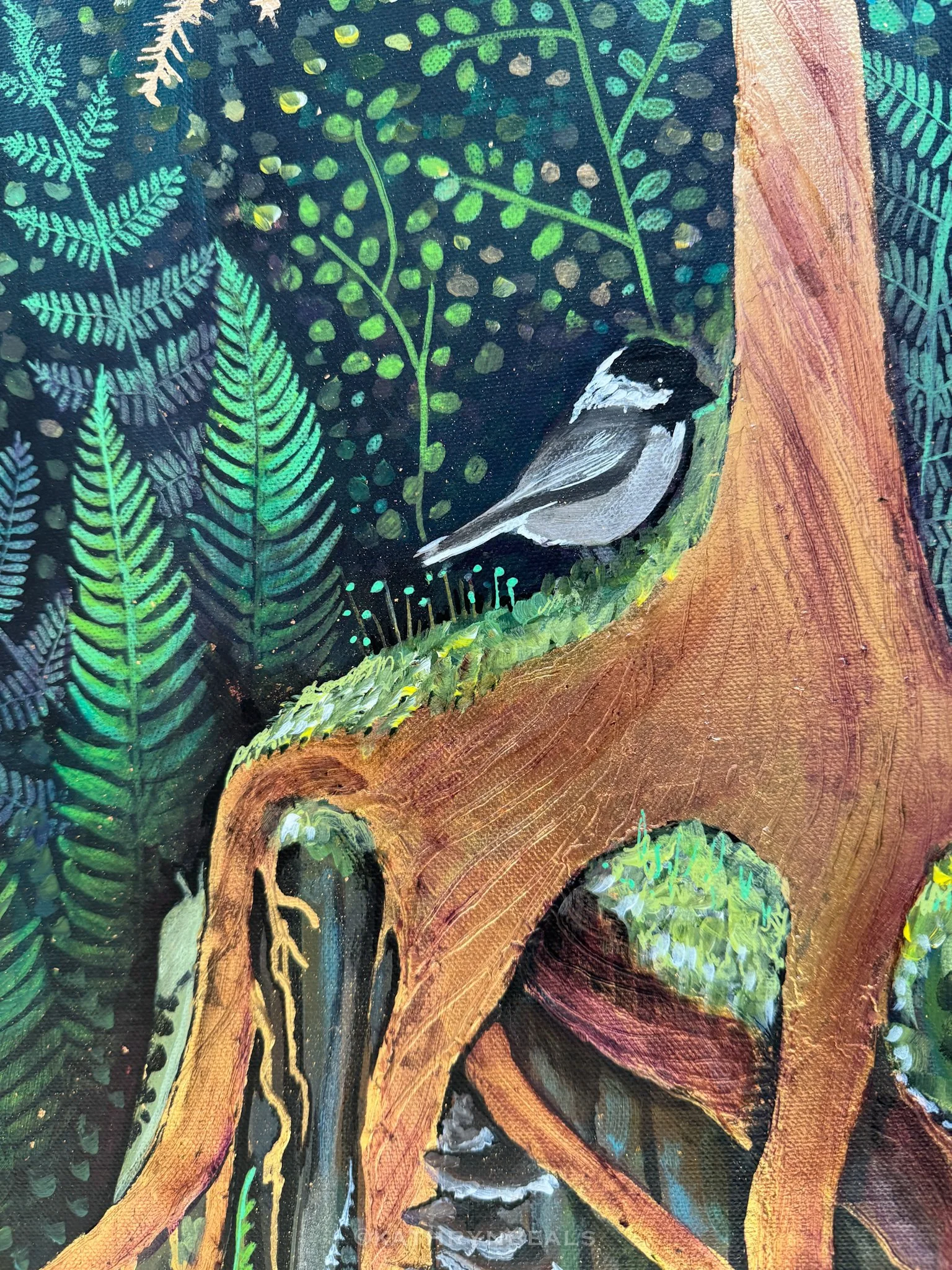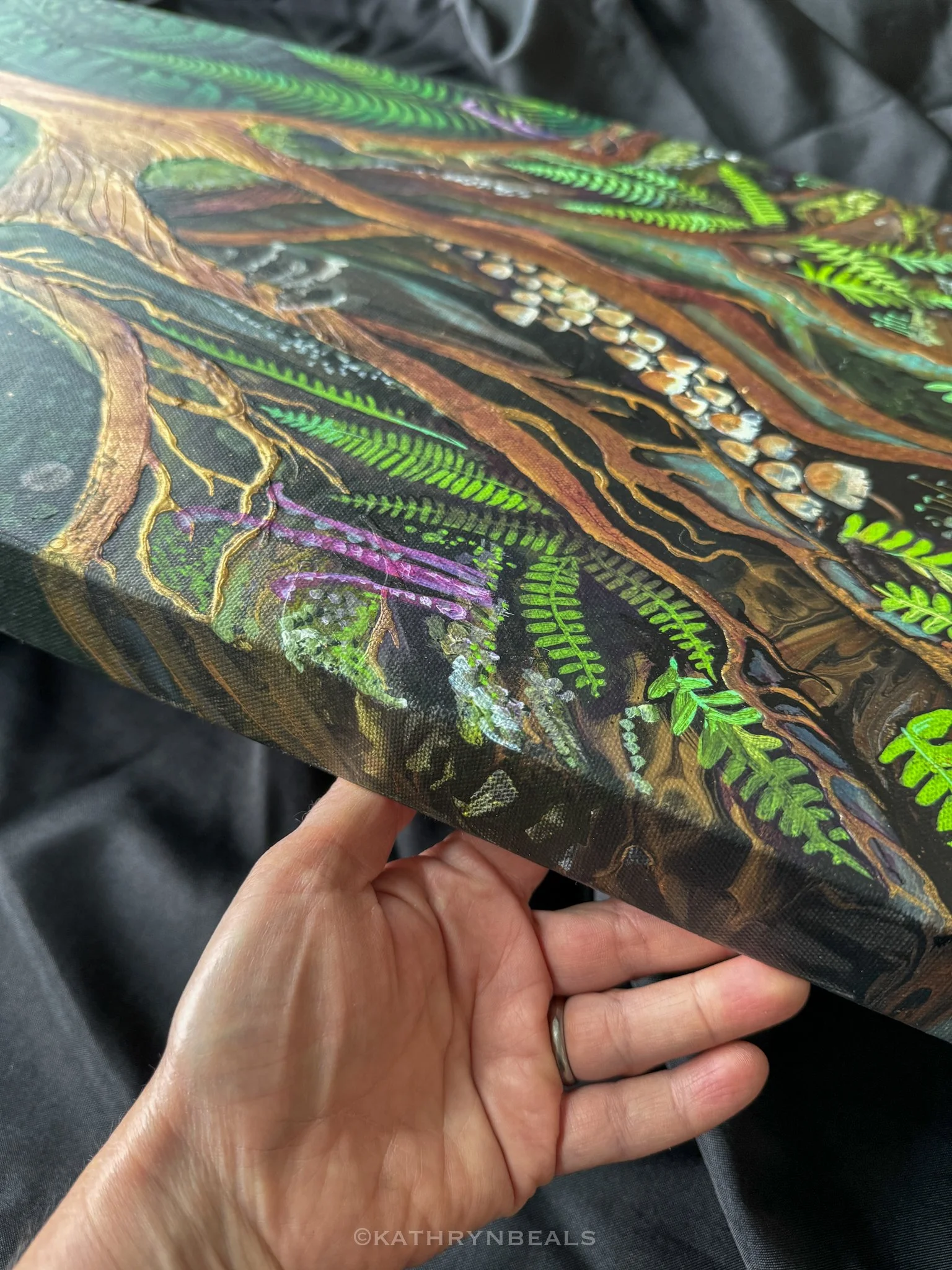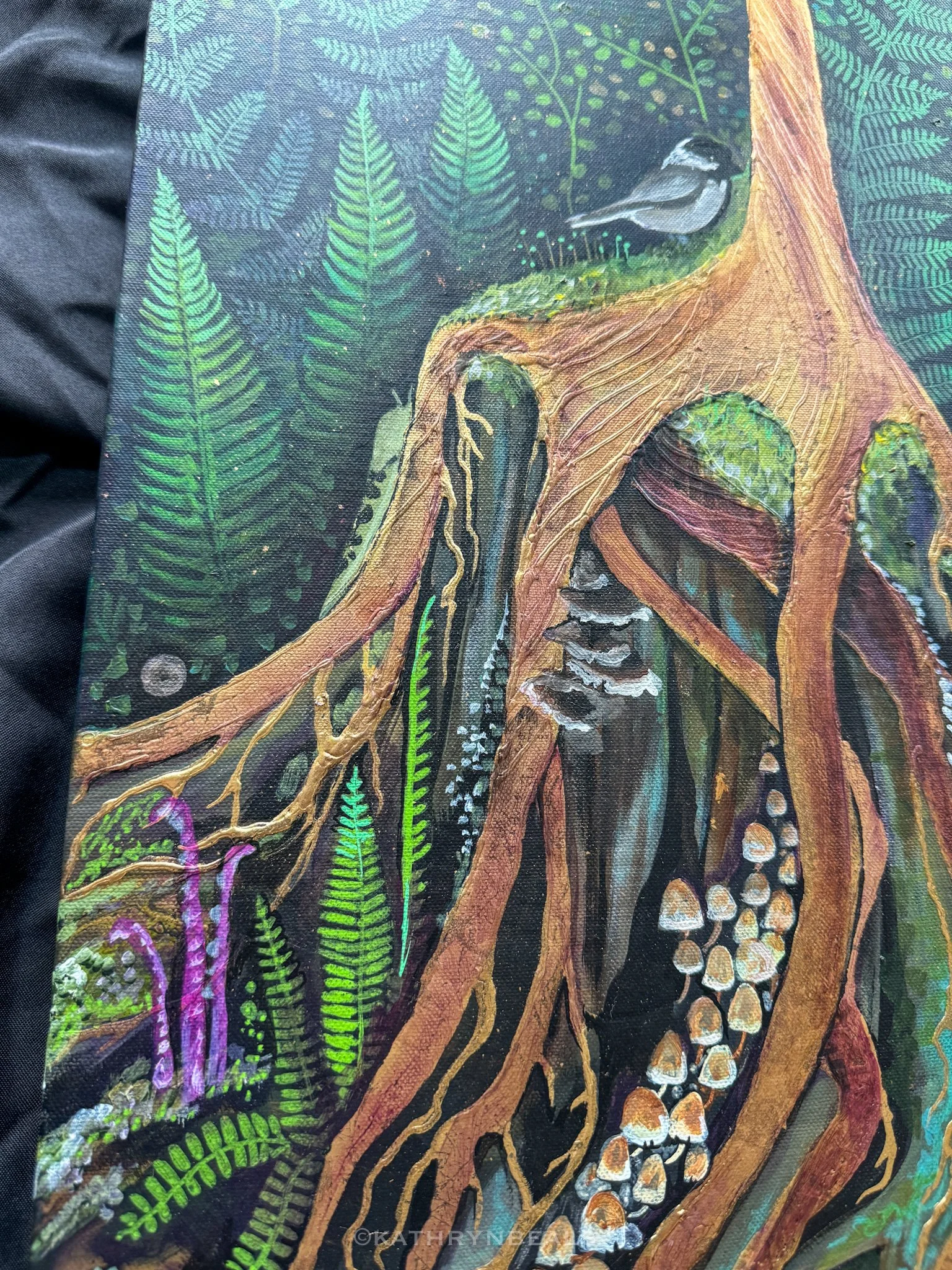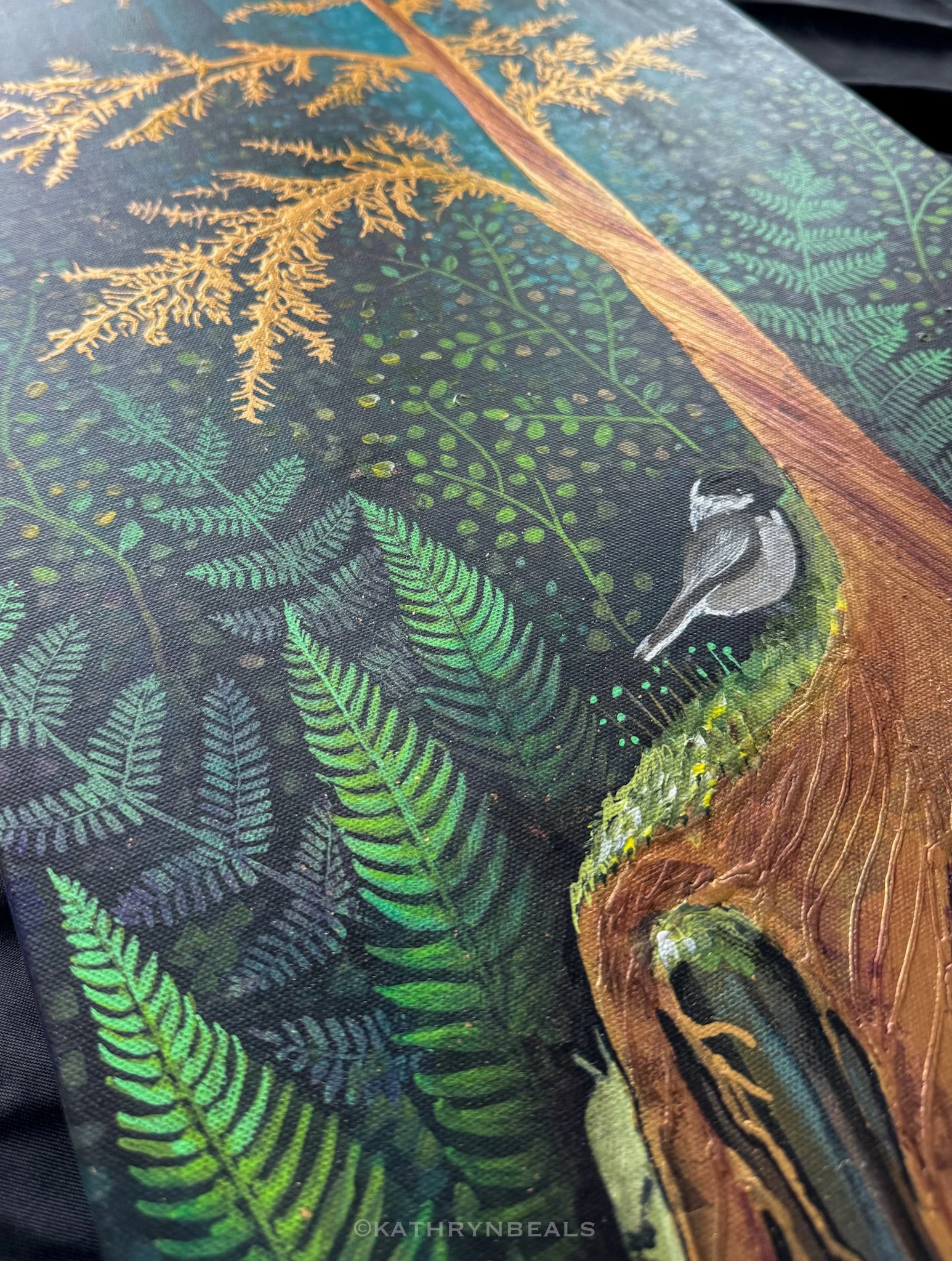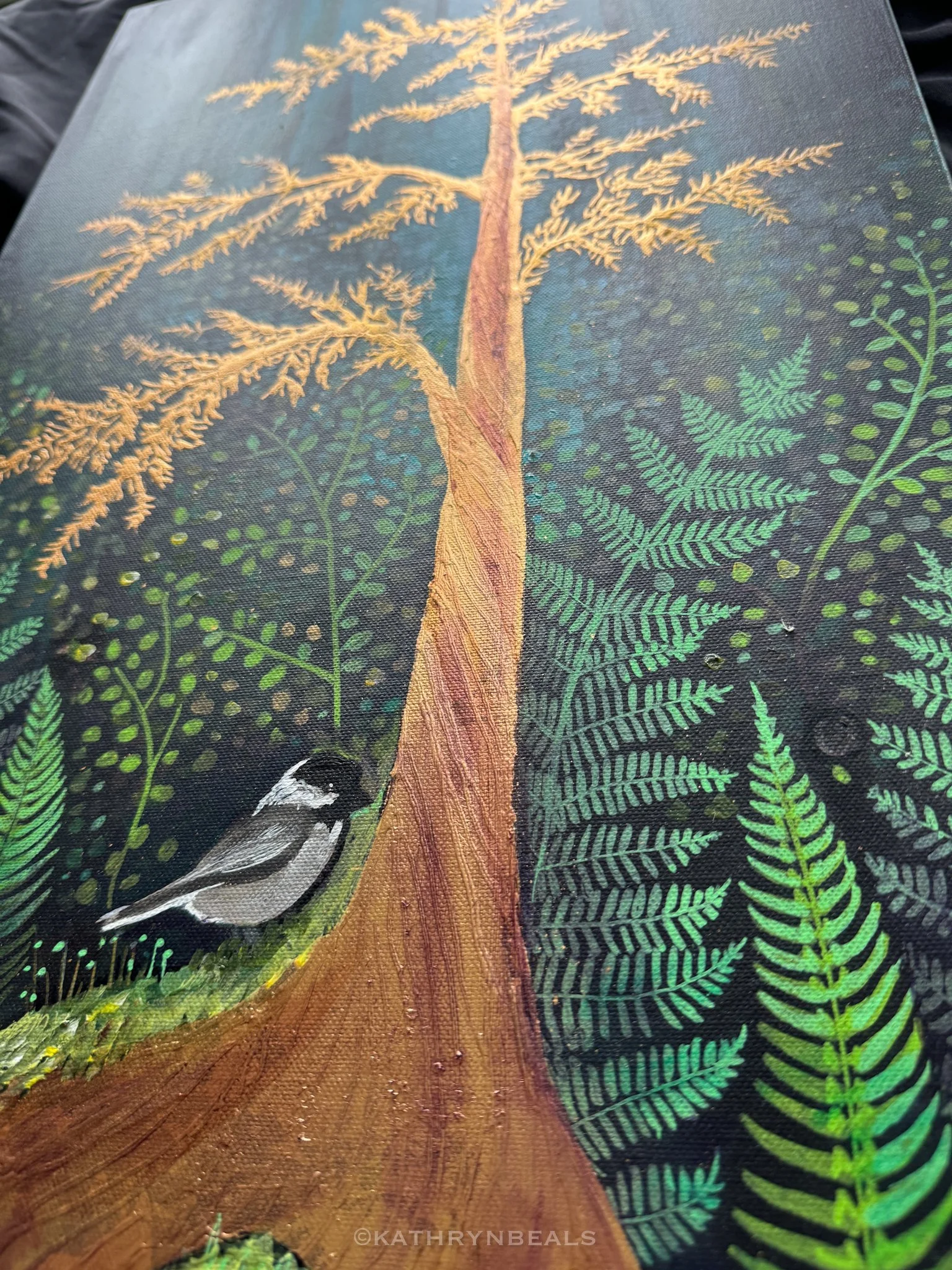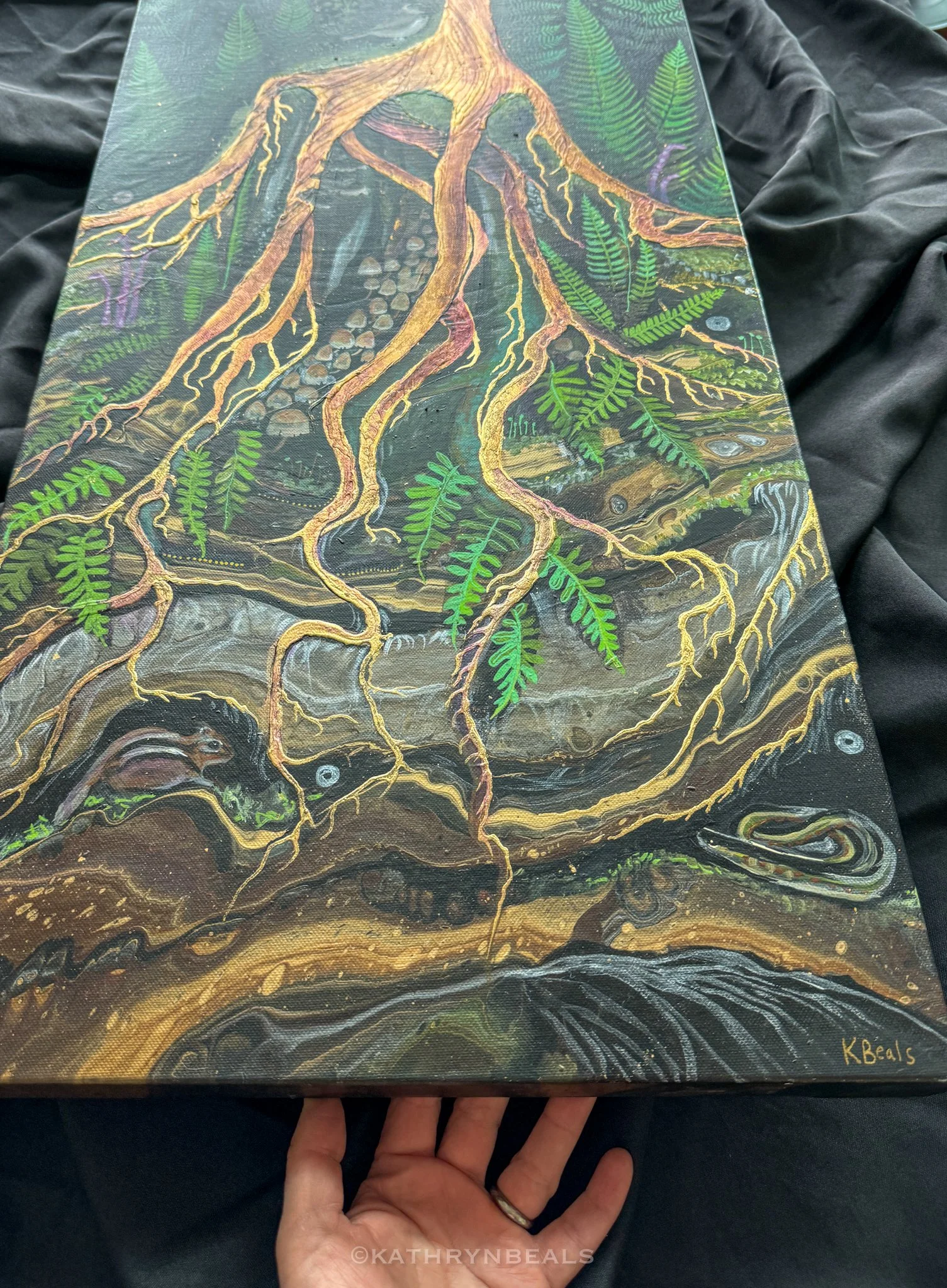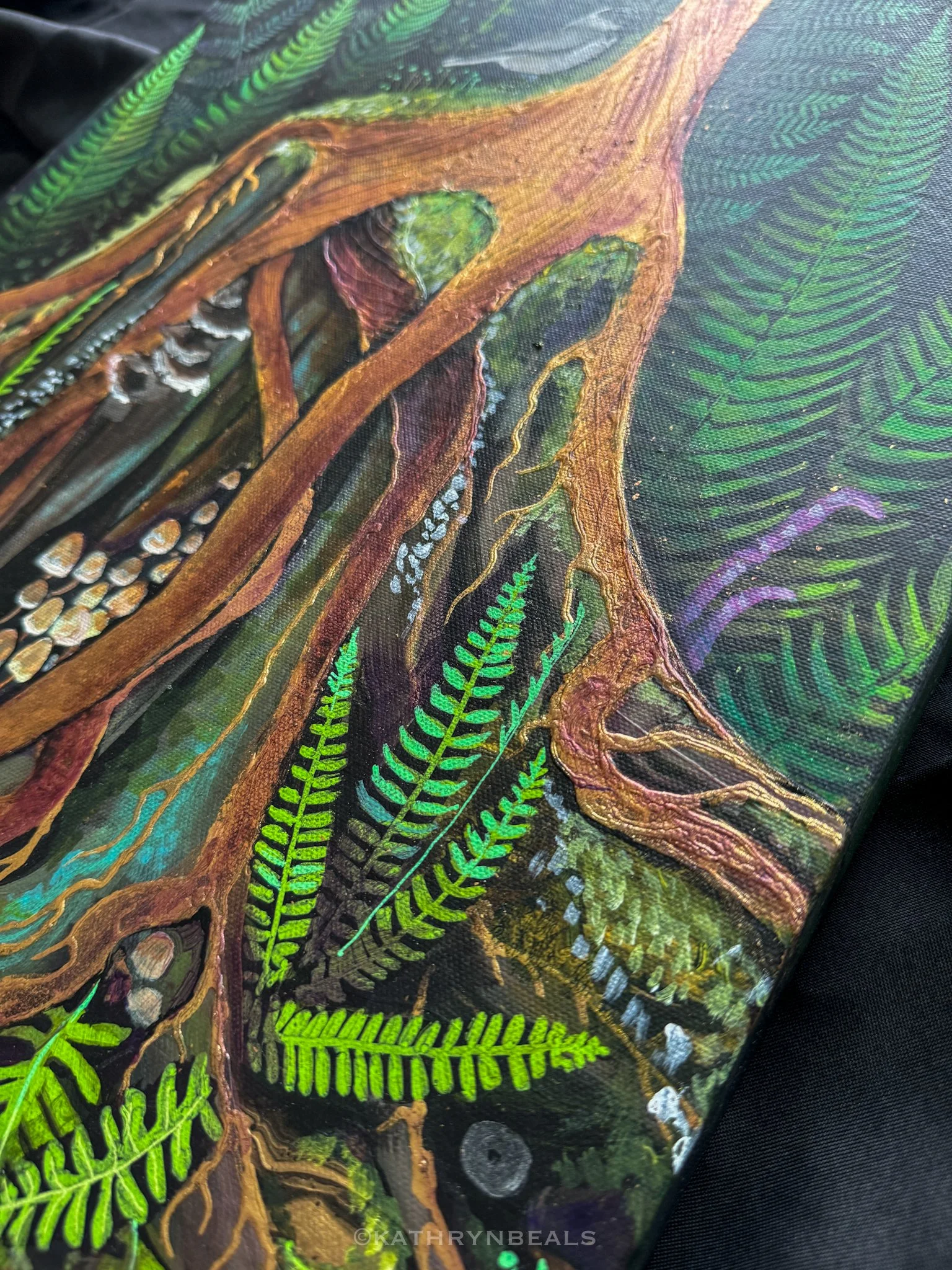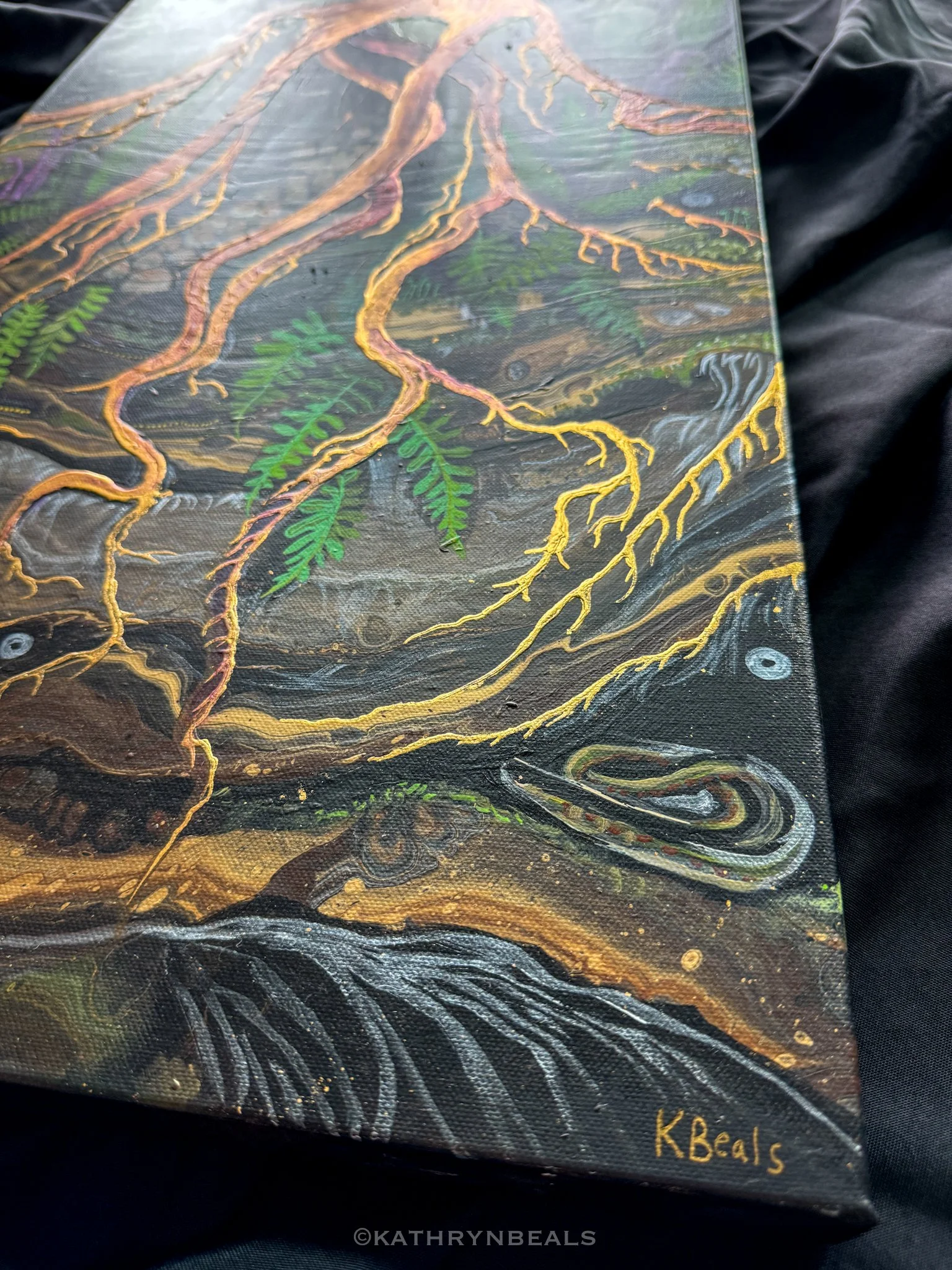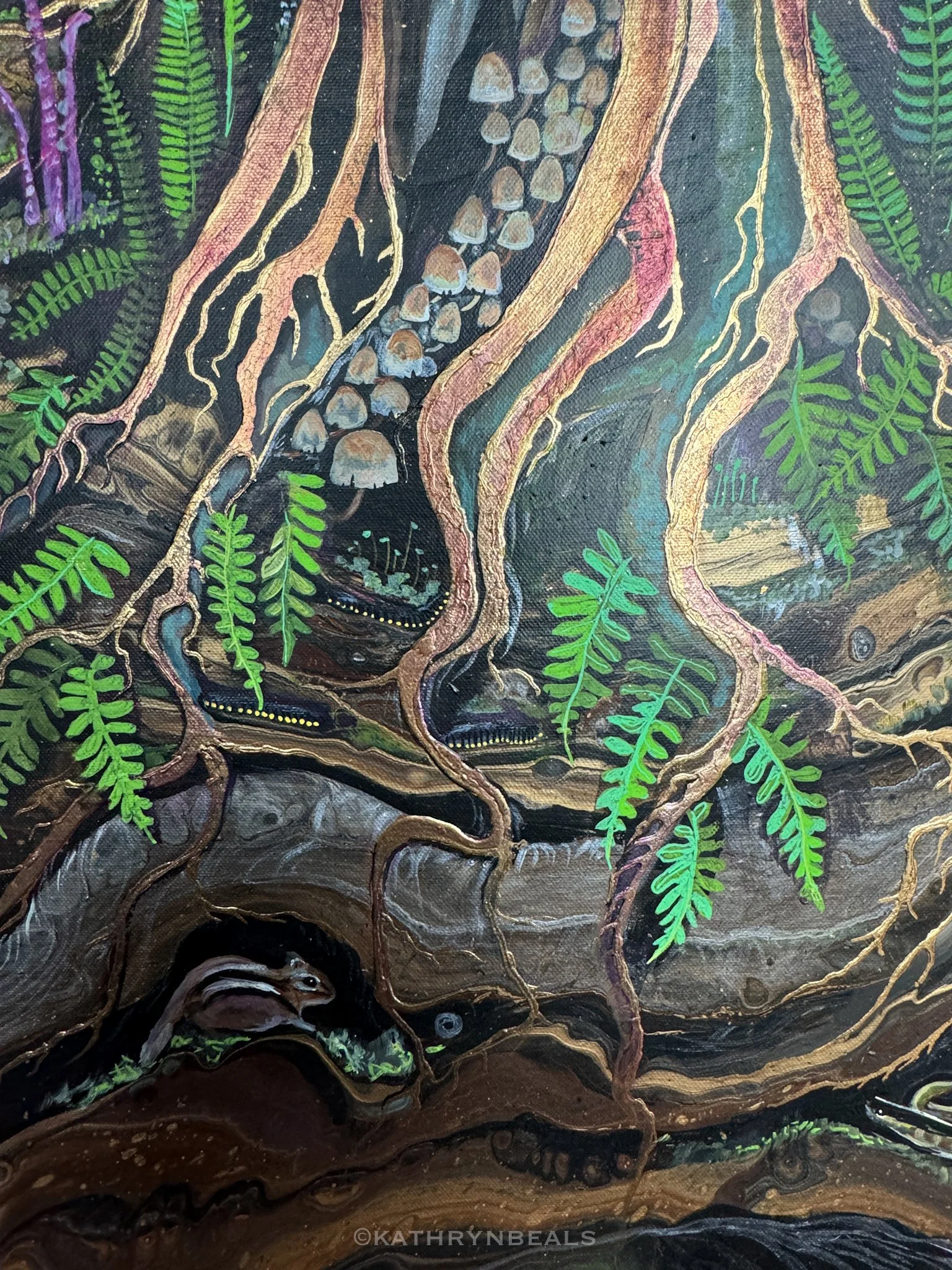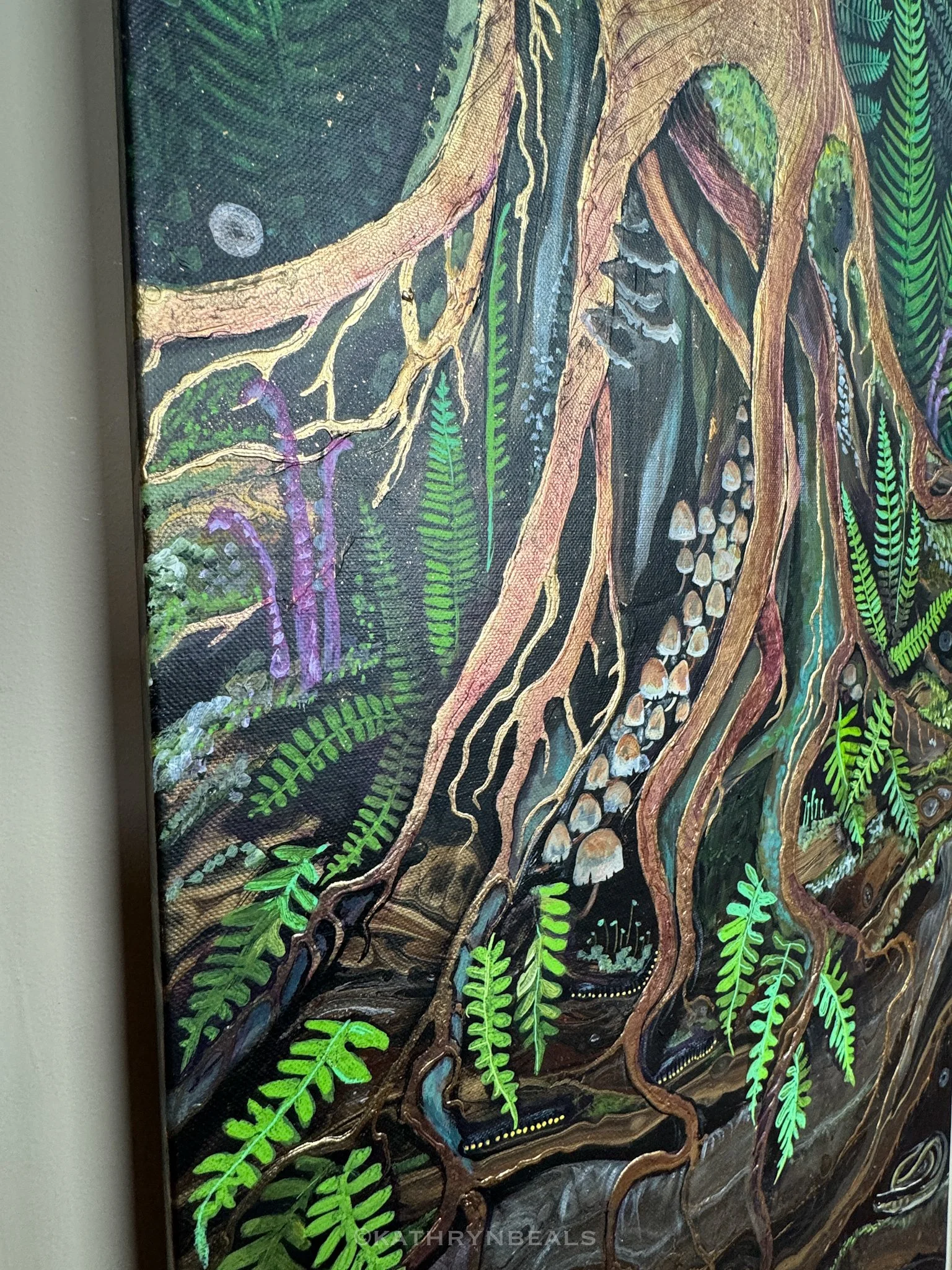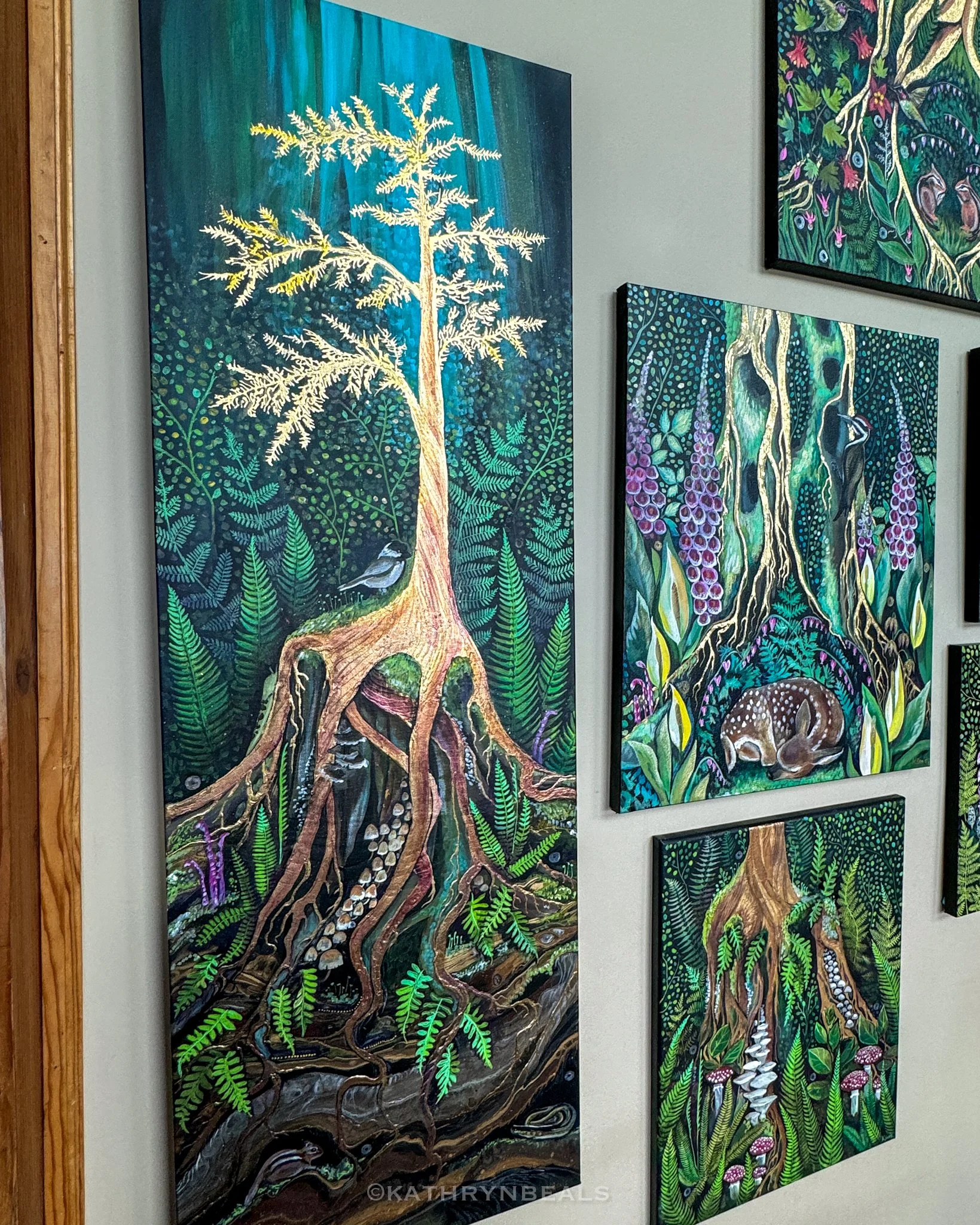About this Species
Much artistic license was taken with the Forest Floor series, and composition often won out over biological accuracy. However, here are a few of the species Kathryn chose to honour in this painting:
Western Hemlock
Western hemlock is a conifer species that grows in wet regions of the Pacific Northwest.Seedling hemlocks often grow on nurse logs, and tiny seedlings may wait for decades for a light gap to form in the canopy from a fallen tree before growing rapidly to take its place.This species is a climax species in the ecological succession of the Pacific Northwest forests.Western hemlock forms ectomycorrhizal associations with many species of fungi.
Sword Fern
The sword fern, Polystichum munitum, is am evergreen fern native to western North America. This fern grows in the understory of coniferous forests in BC, and is adapted to thrive in moist soil and cool temperatures.The individual fronds live for up to 2 years.The sword fern is named because the lobes of the pinna (small leaves within the frond) resemble the hilt of a sword.This plant was used by the Coast Salish peoples as a topical pain reliever.
Coralroot Orchid
These pink and white orchid flowers do not photosynthesize like most plants - they instead use nutrients from mycorrhyzal fungi, in a process known as myco-heterotrophy.As a result of this process, the strange, beautiful Corallorhiza flowers have never been successfully cultivated and can only be enjoyed on the forest floor.
Deer fern
This low-growing fern is native to the Pacific Northwest, and is an important winter foraging food for the deer of the coastal areas.
Chipmunk
These small striped rodents are members of the squirrel family, and play an important role in seed dispersal in Pacific Northwest forests.In addition to seeds they consume many different kinds of fungi, including those involved in symbiotic mycorrhizal associations with trees.
Western chipmunks mate and produce a litter only once per year, and rely on a stockpile of food in their burrow over the winter since they do not hibernate.
Garter Snake
There are approximately 35 species of garter snake, with varying markings adapted to habitats on beaches, forests and grasslands.These harmless snakes bask in the sun on forest trails to thermoregulate, and overwinter in large communal sites underground called hibernacula.
Chickadee
These small, nonmigratory seed eating birds are native to North America, and flock in social groups.Chickadees cache their seeds for winter, and have amazing spatial memory, remembering the location of thousands of seeds.Chickadees nest in tree cavities and lay 6-8 eggs.
All images remain copyright © Kathryn Beals.


